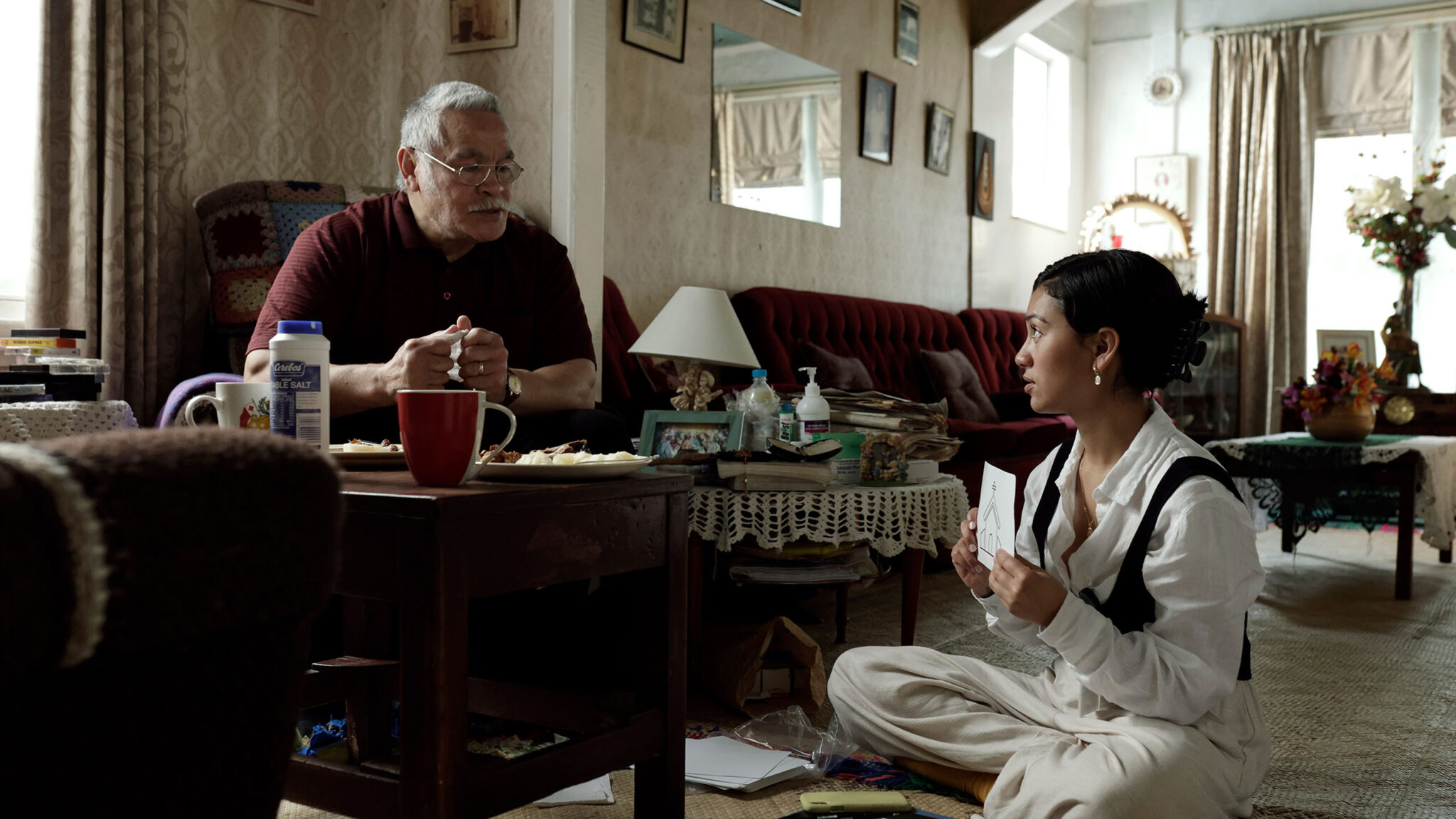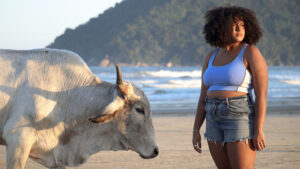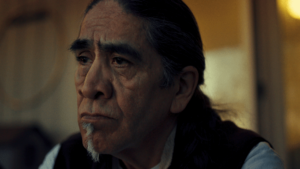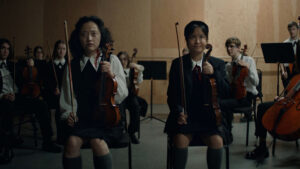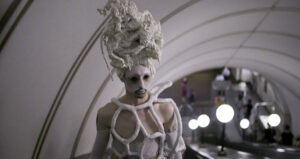A still from Vea Mafile’o’s “Lea Tupu’anga / Mother Tongue,” which screened as part of Short Film Program 2 at the 2024 Sundance Film Festival.
By Lucy Spicer
One of the most exciting things about the Sundance Film Festival is having a front-row seat for the bright future of independent filmmaking. While we can learn a lot about the filmmakers from the 2024 Sundance Film Festival through the art that these storytellers share with us, there’s always more we can learn about them as people. This year, we decided to get to the bottom of those artistic wells with our ongoing series: Give Me the Backstory!
While we eagerly await the upcoming 2025 Sundance Film Festival (only a couple months to go!), we’re revisiting works from the 2024 Fest that remind us of the power independent film has to enlighten, inspire, and connect us all. In the chaos of the holiday season, we’re especially drawn to short films — if you can’t find the time to sit down for a full-length feature, a short film can still draw you into a storyteller’s world in a matter of minutes. (And if you know someone who loves shorts as much as we do, there’s no better gift this year than the 2025 Sundance Film Festival Short Films Pass: Online, available for purchase now.)
We’re closing out November by highlighting three Indigenous filmmakers who brought their unique short films to the 2024 Sundance Film Festival: Mariah Eli Hernandez-Fitch (Ekbeh), Jared James Lank (Bay of Herons), and Vea Mafile’o (Lea Tupu’anga / Mother Tongue). Learn more about the artists below, whose films explore themes such as Indigenous connection with and without language, the resilience of culture tied to nature, and the desire to belong while existing between two worlds.
What was the biggest inspiration behind this film?
Mariah Eli Hernandez-Fitch (Ekbeh): Absolutely my grandparents. My thesis film cohort. Working alongside them while making our thesis films was one of my favorite experiences. It was not easy, especially while being a full-time student at such an academically rigorous institution. However, we worked alongside each other and uplifted each other. A huge inspiration was also my Indigenous friends doing amazing things for their communities. I was like, I need to do something.
Jared James Lank (Bay of Herons): The indomitable omnipresence of the natural world and its unwavering ability to endure was by far my greatest inspiration. We have been so atomized in our society and often forget that our separation from nature is an illusion. Challenging the indoctrinating force of that notion and working to rediscover how my ancestors wove themselves into the same landscape I find myself in today inspired me.
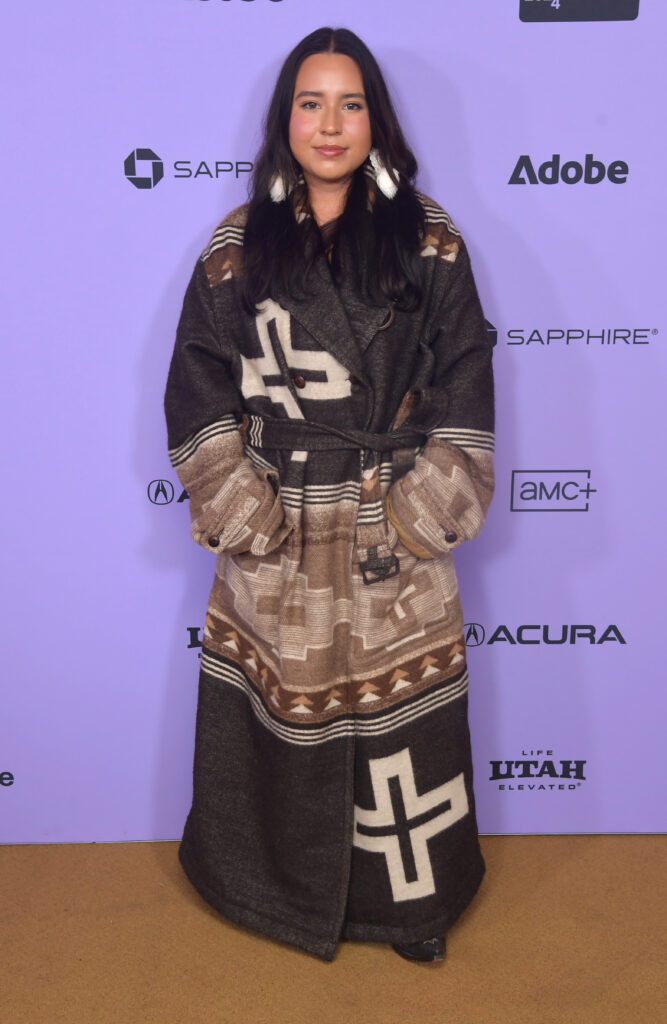
Vea Mafile’o (Lea Tupu’anga / Mother Tongue): Luciane Buchanan, the writer and a close friend, brought her experiences as a Tongan “hafi-kasi” (half-caste) woman to the table. The themes in the film, revolving around feelings of disconnection, inadequacy, the outsider experience, and the perpetual quest for belonging, resonate on a profound personal level for both of us. These themes reflect the challenges we have faced in navigating the dual worlds of the Western and Tongan cultural landscapes, where language serves as both a bridge and a barrier.
I was drawn to the film from my childhood experiences, where, like Luciane, a language barrier existed between my Tongan grandmother and me. But it was her expression of love through the traditional art of “fotofota” (massage), rooted in her role as a traditional healer, which was a powerful means of connection. It transcended language and created a deep sense of belonging that resonated with me on a cellular level. She embedded this so deep within me that whenever I need to reaffirm my “Tonganess,” I can wholeheartedly center myself in the memory of her touch and know who I am. This film is an exploration of these intertwined experiences, a tribute to the complexity of cultural identity, and a celebration of the strength and resilience found in familial love. My Granny Vea continues to inspire me and has been my biggest spirit guide, and I am deeply grateful to her.
Films are lasting artistic legacies; what do you want yours to say?
Hernandez-Fitch: I think what I love about this film is that it continues to talk even when it is silent, and that’s true with many films. I have a background in film and media studies, and it’s truly so interesting how we dissected and created so many vibrant discussions about film and its importance. I think there’s so much to discuss with Ekbeh, such as the importance of language as the complexities it can have for both good and bad. Language in law has been used as an act of dispossession and then language in law has also been used as an act of self-determination.
Lank: I want my films to shine a light on shared human experiences of perseverance and resilience. As an Indigenous person, I feel that so much of our history has been left out of cinema for so long, but these stories ultimately transcend silos of race and ethnicity. These stories are fundamentally about being alive and the emotional experience of holding onto existence. I want people to be able to look back on my films and see themselves and their loved ones. I want someone to be able to watch a film about a people or event they’ve never heard of and feel a connection.
Mafile’o: The struggle to feel “Tongan enough” in the face of linguistic challenges is a common thread many individuals born between multiple cultures grapple continuously with. But language, while significant, isn’t the sole way of communication. There are many ways we can connect, especially within our Indigenous cultures, which have a rich tapestry of alternative forms of expression. Through these characters, the film becomes a mirror for those who have grappled with straddling two worlds, feeling like they don’t quite fit anywhere. What emerges from this story is a powerful revelation: When everything else falls away — the relationships, the job, the material possessions — what remains is the enduring strength of love and human connections. It speaks to the universality of love and relationships, transcending cultural and linguistic boundaries. It’s a celebration of the human experience and a reminder that, even amid life’s turbulence, the core of our existence lies in the connections we forge with one another.
Describe who you want this film to reach.
Hernandez-Fitch: First and foremost, my community, and the place I’m from (Dulac). To every storyteller on the bayou.
Lank: Everyone! But if I had to pick a smaller audience, maybe those who find themselves lost trying to navigate this strange world we live in.
Mafile’o: The primary audience for this film is undeniably my own people — those who share the same cultural background, experiences, and stories. The lens through which the narrative unfolds is crafted specifically for our community. It’s about telling our tales, capturing our essence, and reflecting our reality. That authenticity is crucial to building a connection that resonates deeply within our community.
While I acknowledge and prioritize our people first, there’s an understanding that by creating films that authentically represent us, we’re also opening a window for a broader global audience. It’s not about watering down our narrative to fit a more mainstream mold. Instead, it’s about inviting others to step into our world, experience our stories, and gain a genuine understanding of who we are.
This film pushes some boundaries within our Tongan communities. It’s got things like swearing, sex, and cigarette smoking. But these aspects aren’t thrown in for shock value; they’re part of the real, unfiltered context of the characters and their lives. Sure, sometimes I make decisions to tweak things for different audiences and show different versions out of respect for my Tongan culture (traditionally, brothers and sisters can not watch content together that has swearing or is of a sexual nature), but I also have a commitment to standing in the truth of our characters and their world and make the judgment call depending on the audience. This is all part of the process of navigating a new digital storytelling language. We can create new ways of working on set and off, centered in a Moana Pasifika worldview. For me, it’s about embracing the raw authenticity of our stories, even if it means confronting elements that might be considered edgy within our own cultural context. Ultimately, it’s about staying true to the characters and their reality while recognizing that our stories can still resonate globally in all their complexity.
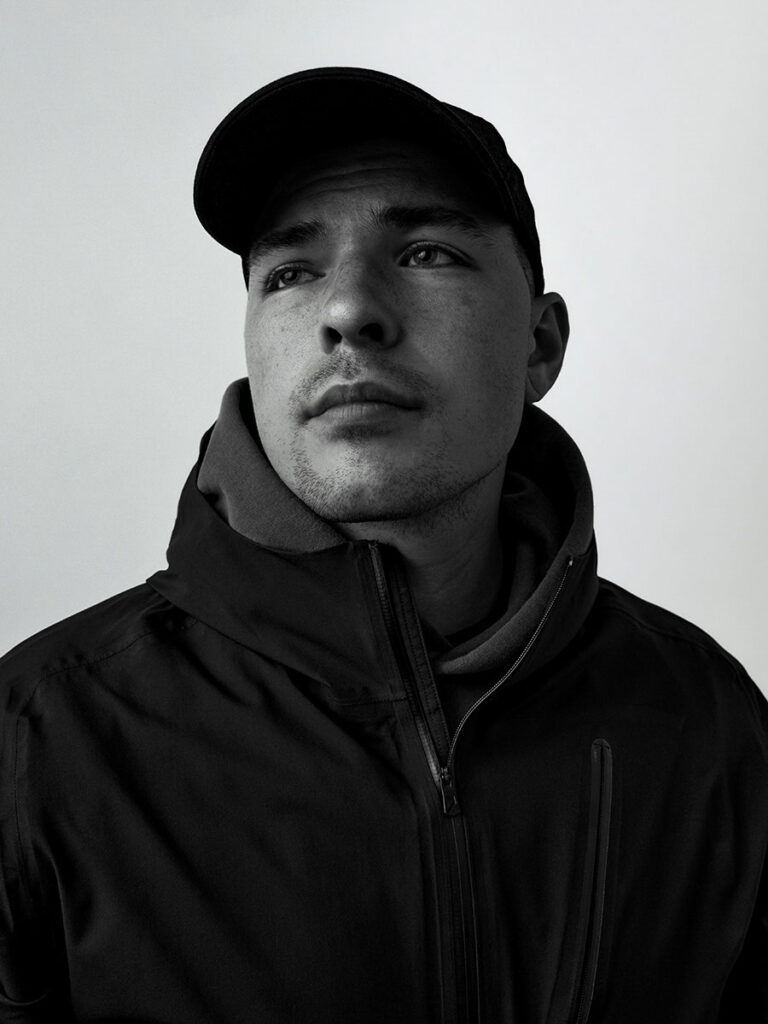
Why does this story need to be told now?
Lank: I think this story needs to be told now because it’s truly a story about our times. Bay of Herons is a visual essay about lived experience and the process of reconciling the harsh truth that this world can be vicious. The lens through which I view the world has been inextricably shaped by the environment I have found myself in, which is very much contextual to this moment.
Mafile’o: This story holds particular significance in the present moment due to a global paradigm shift that is underway — the unraveling of Western systems and the simultaneous liberation from the shackles of shame and negative stereotypes imposed on Indigenous cultures.
In this era, there is a pressing need to reclaim and assert our narratives authentically. Each story now carries heightened importance; it is a pivotal time to share our experiences on our terms. At the heart of this narrative lies the transformative power of storytelling, serving as a catalyst for healing. The film delves beyond its immediate plotline, intricately weaving cultural nuances into the fabric of seemingly ordinary moments — our version of the cultural mundane.
While global audiences may not grasp every subtlety, they may intuitively sense the universal essence embedded in the narrative — the exploration of human conditions that transcend cultural boundaries.
This story also sheds light on the often overlooked elderly members of society, emphasizing the evolving dynamics in how we care for and perceive our elders. The Tongan concept of “Tauhi vā” (maintaining relations), or tending to relational spaces, emerges as a central theme. It signifies the deliberate cultivation of trust, respect, love, and profound connections between one another, cultures, and generations. In a world where the elderly are sometimes marginalized, this narrative encourages a reevaluation of societal norms, urging us to prioritize and nurture meaningful relationships that span cultural and generational divides. Thus, the urgency of telling this story now lies in its potential to inspire reflection, foster understanding, and contribute to the ongoing global discourse on shared humanity and interconnectedness.
How do you want people to feel after they see your film?
Hernandez-Fitch: Hungry. Maybe a lil nostalgic. If anything, I want them — if they can — to just call their grandparents or their family. Ask them a simple question and just listen.
Lank: I want people to feel inspired and curious after watching this. I love seeing a person’s eyes light up when you’ve sparked their interest, and I hope this film moves people to explore their relationship to the physical landscape they exist in and this moment in time we all share.
Mafile’o: I want people to feel “loto-māfana,” the feeling of inner warmth of love. Often when I cry, I cry in loto-māfana — not in sorrow, but because I am warm inside and feeling overwhelmed with love and gratitude. All my films are about learning to love, infused within my cultural context.
Why is filmmaking important to you? Why is it important to the world?
Hernandez-Fitch: There’s something so magical about stories and how powerful and influential they can be. I think film has this ability to reach so many audiences and places and can change the human perspective in a matter of minutes or a few hours depending on the run time. At the end of the day, filmmaking encapsulates the human experience, and as much as we all are different, the human experience of wanting to be understood is a universal want. There’s so much healing in knowing you’re not alone.
Lank: Storytelling has always been fundamental to how humans communicate, but filmmaking is perhaps the most effective way to communicate complex information today. In this ever-increasing media-centric world, cinema has been cemented as a medium capable of globally permeating information across cultural and geographic borders. Utility is only part of the value filmmaking offers us. Storytelling, tethered to our experiences, is essential to how we inform ourselves about this complex world. I believe it is powerful enough to change things for the better.
Mafile’o: It goes back to things that Dr. Manulani Aluli Meyer says about the basis of our Indigenous intelligence being “aloha” or “ofa” in Tongan. Breaking down the intergenerational bindings, systems of disconnection — with love. This is the basis of what my filmmaking is about, the biggest message I wish to share through my filmmaking. Watching a film can be transformative, connection through emotions so we can heal and learn to love. My work is always guided by the sentiment, “A change of heart is a change of head.”
What is something that all filmmakers should keep in mind in order to become better cinematic storytellers?
Hernandez-Fitch: I think the best storytellers tell stories that are an extension of themselves and not an extractive exchange. Then you are more careful about the process. Sometimes stories that are not our own are not meant to be told from us, and we have to accept that. And if you are allowed and privileged to tell the story, accepting the role as a vessel — and not the source — is important.
Lank: I think it’s essential to understand cadence and sequencing. A film is very similar to a murmuration of birds; all of these small details and components must be perfectly coordinated to create the bigger picture. It’s also really important to recognize that the coordination happens by chance and luck most of the time. Sometimes, your role is to identify and harness the serendipity.
Mafile’o: Learning to trust your instincts is key. I’d say 99% of the time, that first little voice you hear is the right one. You might second-guess and circle back around or end up kicking yourself with a classic “shoulda, coulda, woulda.” Time’s precious.
And also, “Make the film only you can make.” That’s a piece of advice from producer Catherine Fitzgerald. It’s a reminder to stay true to your vision, bring your unique perspective to the table, and craft something that’s authentically yours. It’s become my mantra in the thick of it all.
What was the last book you read?
Hernandez-Fitch: The last book I read was Christian Allaire’s book The Power of Style: How Fashion and Beauty Are Being Used to Reclaim Culture, for research purposes on an essay I’m writing. Big fan of Christian and how he spotlights Indigenous artists/designers/creators. It’s so exciting to see Indigenous people break down the barriers of multiple industries and become inspirations and mentors to the upcoming generation.
Early bird or night owl?
Hernandez-Fitch: I think there is something really therapeutic about being awake when the majority of the world is sleeping — so maybe a combo of both.
Lank: It really depends on the season. I’d say I want to be a morning person, but I have such a tendency to get inspired later in the evenings and feel the pull to stay up to keep the momentum going.
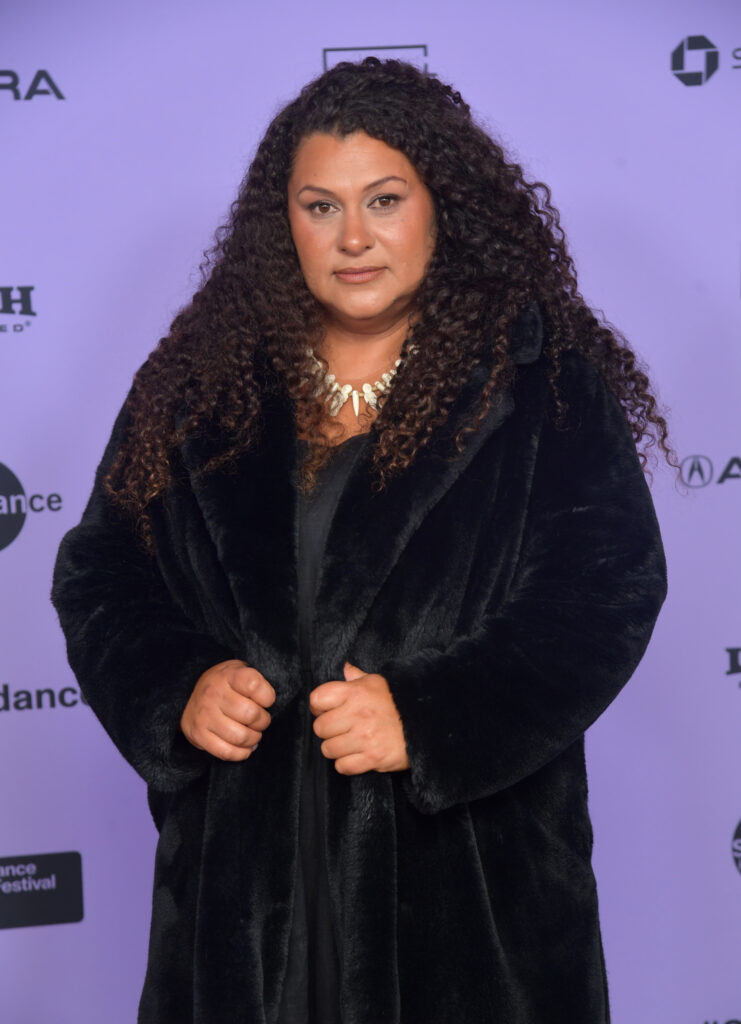
Mafile’o: Definitely a late-night owl!
Who was the first person you told when you learned you got into the Sundance Film Festival?
Hernandez-Fitch: I got the call while I was walking to my art and cultural property law class, and during that time I usually call my mom to just brief on the upcoming day. Naturally, it felt right to call my mom, but I waited a few hours because I had to think of a way to emphasize that she could not tell a soul. Eventually I called her, but it was after I notified my friends who knew about the submission first.
Lank: I’m not sure if this counts, but my wife, Abby, because she was with me when I got the phone call!
Mafile’o: Well, after receiving an email from Sundance to call back as I kept blocking the calls thinking it was spam, of course, I bawled my eyes out during the call. After I had composed myself, I did a group call to Luciane and our producers, Alex and Eldon, who had been nervously waiting for weeks. They had a lot of faith in the film. What a surreal moment! We were all pretty stoked to say the least!
What’s your favorite film that has come from the Sundance Institute or Festival?
Hernandez-Fitch: This is a tough one. I can’t have just one. I’m a really big fan of Jordan Peele’s Get Out, Hunt for the Wilderpeople by Taika Waititi — or really anything Taika creates. I really love his element of playfulness and perseverance that is in his films. I think the most impactful for me as Native woman has been Shaandiin Tome’s work and her film Long Line of Ladies.
Lank: There are so many it’s hard to choose from, but I would say a classic that I love is The Blair Witch Project. That movie changed the world in many ways and skyrocketed indie horror. I also really loved Get Out.
Mafile’o: Merata: How Mum Decolonised the Screen directed by the talented Hepi Mita and The Orator (O Le Tulafale) by Samoan director Tusi Tamasese, both stunning Moana Pasifika filmmakers.




